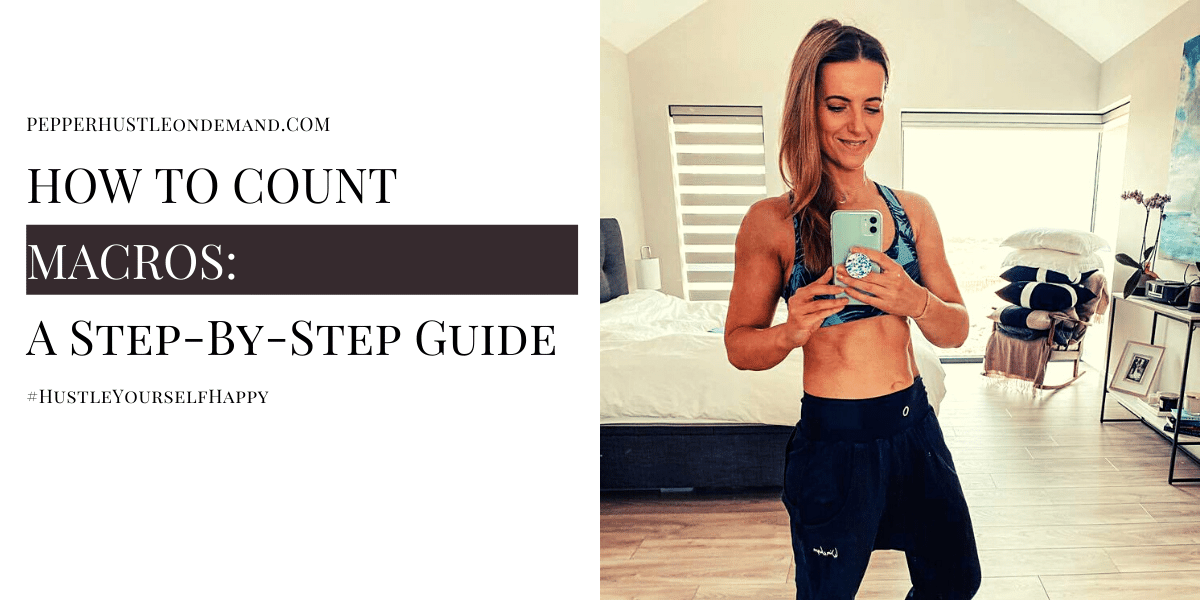11 Jul What are Macros? And, Do You Need to Track Them?
.

You may have seen an influx of trainers talking about macro’s and IIFIYM (If it fits in your macros) then eat the doughnuts, crisps and ice cream. And, that’s all good but it doesn’t mean it’s for everyone.
You may hear the word macro and suddenly feel like it’s this mythological, fancy formulae that only hardcore fitness fanatics are in the know about.
Well, that’s simply not true.
First of all, let’s have a little look at what macros are and why they are important.
Macronutrients or “Macros” are the main building blocks of good nutrition.
They are also commonly known as Proteins, Fats and Carbohydrates. They are essential to the body in order for it to be able to function properly.
We tend to categorise things like bread as carbohydrates, meat as protein and avocado as fat. However, a lot of foods contain all three macros. But in different proportions which is what leads to their grouping within their corresponding macro ‘header’.
(For example, pasta is a carbohydrate but contains fat and protein. Meat is a protein but contains fat. Avocado is a fat but contains carbohydrates.)
A balanced diet is a diet rich in all three macronutrients aka ‘macros’.
- Carbohydrates are the primary source of energy for the body.
- Proteins are the essential building blocks for the body that help with the repair and rebuilding of muscles. As well as, your organs, skin and blood.
- Fats are what insulate the body and keep your hair and skin healthy. They are necessary to enable the body to absorb fat-soluble vitamins A, D, E & K. Fats also provide essential fatty acids needed for brain health and other functions that without, the body will not work properly.
So, now that you understand what Macros are and how important they are for your health. Is it necessary to count your macros in order to live a full, healthy lifestyle?
Here at Pepper Hustle, our PFC Nutrition Program is heavily designed around each of the macronutrients and their corresponding role within the body.
We don’t track our macros, in that we don’t weigh or measure how many grams of each macro we eat. Instead, we opt for a balanced plan that converges around sustainability, flexibility and most importantly education around the freedom of food.
We are big supporters of balance and portion control because it removes stress and anxiety from your every day living and allows you to find a flow that works for you in a healthy, happy way. There are some areas where tracking macros is necessary. This is normally within the body building community or if you are a focused individual that can only get aligned results through calculating and managing numbers to feel in control.
However, we also respect those within our own community who want to track their macros in order to reach their goals. Because, as well as being given the tools to succeed, we also believe in freedom of choice.
So, here we will explain how you can do it so that you can decide for yourself what is right for you as an individual. Be informed and do it properly.
But, how do you know where to start? And how do you figure out how much protein, fats and carbs you need to consume on a daily basis?
Counting your macros requires you to track, measure and manage every piece of food that goes in to your mouth.
Calories come from the foods that you eat and are a measurable unit of energy. Your Proteins, Fats and Carbs.
So, whether you want to maintain your current weight, lose weight or gain weight the first step is to figure out how many calories you need to support your body at rest.
This is called your Resting Energy Expenditure (REE)
Here is the basic calculation you need:
For Females:
10 x weight (kg) + 6.25 x height (cm) – 5 x age (yrs) – 161 = REE
For Males:
10 x weight (kg) + 6.25 x height (cm) – 5 x age (y) + 5 = REE
Next, you need to calculate your Total Daily Energy Expenditure (TDEE) which is the amount of energy your body needs to eat, sleep, breath, work, walk and perform whatever levels of activity you do within your daily routine.
If you are sedentary: normal daily activities take your REE x 1.2
Light Activity: REE x 1.375
Moderate Activity: REE x 1.55
Extremely Active: REE x 1.725
The outcome of your calculation will be the number of calories you need to eat each day in order to MAINTAIN your current body composition
If you would like to lose weight, start by reducing that number by 10% and if you would like to gain weight start by increasing that number by 10%
Then as you feel necessary, in relation to your goals you can play around with the numbers until you feel happy with the direction you are going in.
Now, in order for you to have a healthy balance you can now work out how much of your determined calories should be made up of Carbohydrates, Fats and Proteins.
A high level, easy reference to start with is to have 40% of your calories coming from Proteins, 40% from Carbs and 20% from Fats.
You can then go on to the following:
- So, 1g Protein = 4 Calories
- And, 1g Carbohydrate = 4 Calories
- 1g Fat = 9 Calories
You will eat 1g protein for every lb of body weight, you will multiply this number by 4 (as 1g of protein is 4 calories) and you’ll find the calorie equivalent of your protein requirement.
Next, you calculate your fats which is recommended at 25% of your daily intake.
So, you take your full calorie count for the day divide by 100 multiply by 25 to give you your 25% calorie amount. Take this number and divide by 9 (as 1g fat = 9 calories) and you are left with how many grams of fat you need to eat.
Your carbohydrates will make up the remainder so take your daily calories, minus your calories allocated for proteins, minus calories allocated to fats and the number you are left with, divide by 4 (as 1g of carbohydrate = 4 cal) and you’ll find the total gram of carbohydrates you will eat to complete your macro count.
You can weigh out your proteins, fat and carbohydrates on a scale at every meal and you can track your daily consumption on an app like my fitness pal.
It’s important that you don’t become too obsessed. Individuals who are entering bodybuilding competitions will find it necessary to track macros religiously. But unless you are taking part in something which requires such precision you can loosely follow these guidelines, adjust as necessary but ultimately you want to feel good within yourself.
You don’t need to starve yourself, you don’t need to cut carbs and fats are definitely not the enemy.
Energy In vs Energy Out is the ultimate way to feel good both inside and out. Move your body, eat a good, balanced diet and find something that works for you.
As someone who’s been there and done it with tracking macros and counting calories. Will I ever go back to tracking macros obsessively?
No, I like not being a slave to an app on my phone for every tomato, egg or latte that I consume.
Because, I prefer to live a life that I eat with freedom, I can go out and enjoy a meal with my friends. And, if I want a second latte I’ll have one without the immediate guilt associated with it when I realise that I’ve exceeded my carbohydrate goal by 10%.
If I feel sluggish I know I need to exercise a little more and cut back on the treats. This is somewhere I’d much rather be than in an unsustainable cycle of measuring all of my food and panicking if I forgot to log my slice of parma ham at breakfast time.
Similarly, in a world where we have freedom of choice, do what works for you. There is no right or wrong. If you are someone who needs to be in control and micro-manage every step to success then, go for it. Tracking macros is a dieting behaviour that can take a little joy out of life.
There will be a trigger though, maybe the day that you eat your smoked salmon and steamed broccoli in the toilets of your local bar because you can’t enjoy anything from the menu when you have met your friends for dinner. Or when you become irritable and cranky because without realising it you have restricted yourself so much that it’s become an unhealthy obsession and your hormones are imbalanced and your hair starts to fall out.
If you are going to do it, don’t let it take over your life. Life is for living, eating good food, cut the junk and moving your body.
Above all, it doesn’t have to be any more convoluted than that for women like us who are trying to be healthy and strong and are committed to looking after ourselves from the inside out.
Pepper Hustle was built on the foundations of teaching women that you can feel better within yourself, find body confidence and start living life. Free from the obsessions of dress size and embracing your body for the magical vessel it is. Through a positive mindset, nutrition and movement you too can free yourself from the pressures society put on us to be a certain shape and look a certain way.
You can indeed Hustle Yourself Happy.

Lynne
Co-Founder of Pepper Hustle


